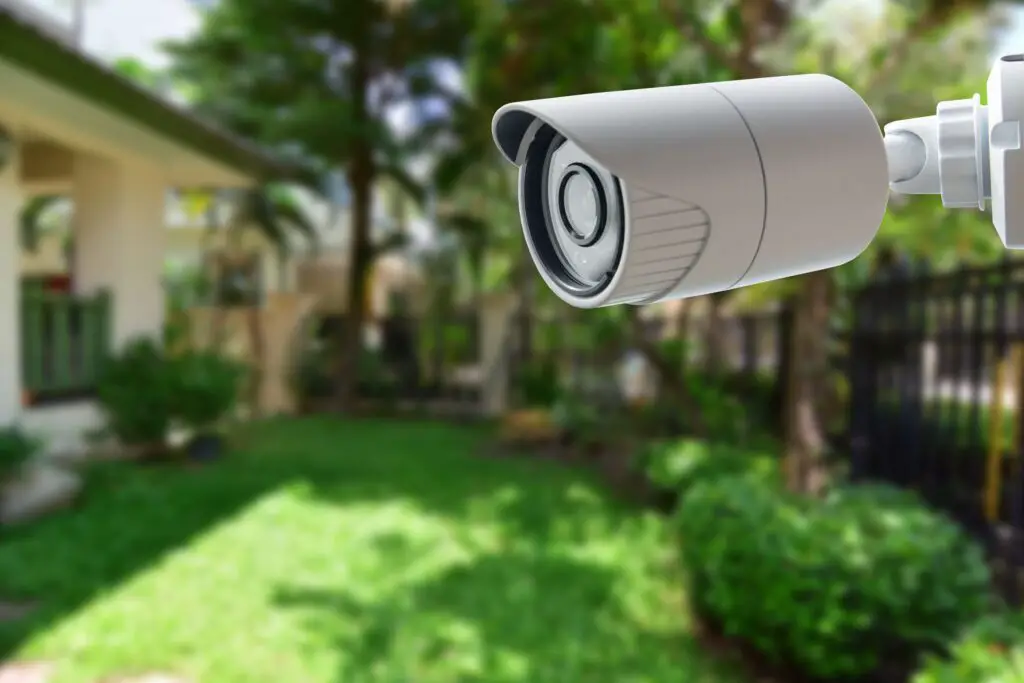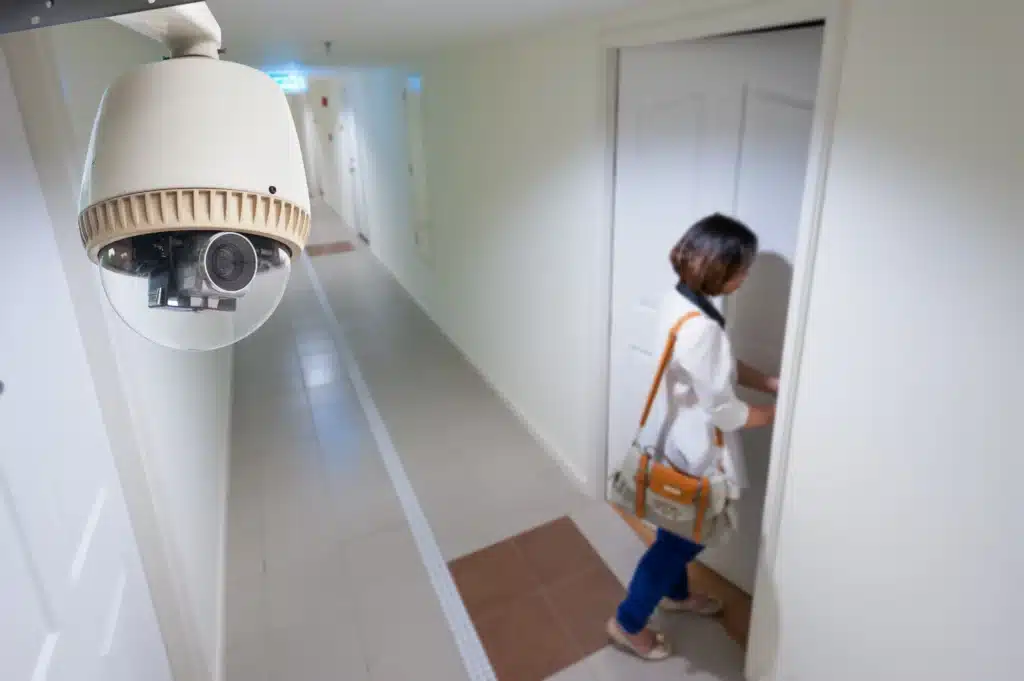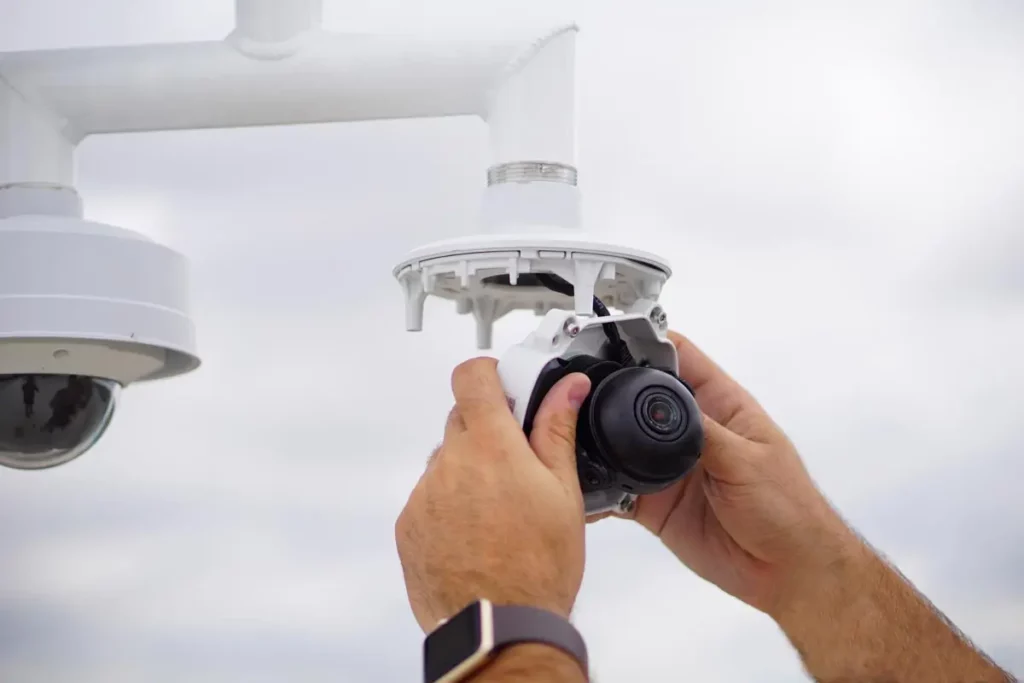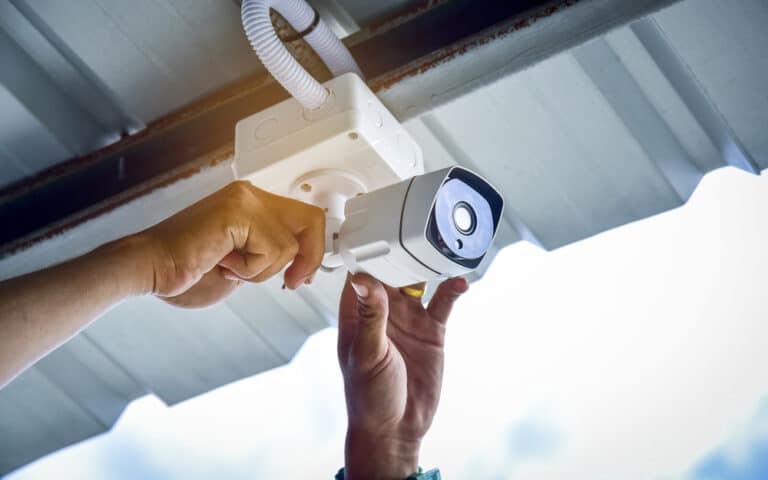Introduction
Indoor security cameras have become increasingly popular as a means to monitor and protect our homes and loved ones. However, some individuals may prefer to keep their surveillance efforts discreet and hidden from view. Finding creative solutions to hide indoor security cameras is useful for aesthetics, privacy, and normalcy.
We will show you how to hide your surveillance indoor cameras with cunning positioning and disguises. The local surveillance laws and get agreement from anybody who may be filmed. We help you balance security and privacy.
Camera placement, concealing techniques, and unique solutions can help you secure your home while maintaining its aesthetics. This article helps homeowners, renters, and business owners hide inside security cameras discreetly. Clocks, image frames, and plants-shaped camera skins.

Where can I hide my security cameras indoors?
Try these common items in your house that could help to hide a security camera inside and outside easily:
- Book shelves.
- Smoke detectors.
- Desk plants.
- Tissue boxes.
- Stuffed teddy bears.
- Fake rocks.
- Fake hanging potted plant.
High on the walls or ceilings: Mounting cameras high up near the ceiling or on the walls can provide excellent coverage while reducing their visibility. Ensure they are angled correctly to capture the desired area without obstructing the view.
Inside decorative items: Incorporate your cameras into everyday objects or decorative items to camouflage them. For example, you can place a small camera inside a vase, a bookshelf ornament, or even a stuffed toy. This approach allows the cameras to remain hidden in plain sight.
Behind household items: Hide your cameras behind commonly used items, such as clocks, picture frames, or wall mirrors. These objects can effectively conceal the cameras while still allowing them to capture footage without drawing attention.
Disguised as other devices: Some security cameras are designed to resemble other electronic devices. You can find cameras that look like smoke detectors, motion sensors, or even power outlets. These specialized cameras blend seamlessly into the environment and are often overlooked.
In air vents or light fixtures: If you have air vents or light fixtures in the room, you can explore the option of placing a small camera inside them. This method allows the camera to be hidden while still providing a wide field of view.
How do you camouflage a security camera?
Camouflage with trees, leaves, and bushes
A great trick to hide outdoor security cameras is by placing them behind trees, bushes, or even within a fake hanging potted plant. The leaves can hide the camera’s body to make it less noticeable. Just make sure the lens itself is not covered with branches or leaves.
Use camera skins or covers: Many security cameras come with the option of interchangeable skins or covers that can be customized to match the environment. These skins often resemble everyday objects like clocks, plants, or even wall art. By applying a suitable skin, you can transform the camera into an inconspicuous object that blends harmoniously with the room.
Utilize decorative housing: Instead of using skins, you can opt for decorative housing specifically designed to conceal security cameras. These housings resemble common household items such as lamps, motion sensors, or even stuffed animals. They provide a discreet and inconspicuous way to hide the camera while maintaining its functionality.
Incorporate the camera into existing objects: Look for opportunities to integrate the camera into existing objects in the room. For example, you can hide a camera inside a potted plant, a bookshelf ornament, or a wall-mounted decoration. This approach allows the camera to remain hidden in plain sight and be less noticeable.
Match camera color to the environment: If your camera doesn’t come with a skin or cover, you may always paint it to blend in with whatever it’s placed on. This simple technique helps the camera blend into its surroundings and minimizes its visibility.
Should security cameras be hidden?
Hiding your security cameras will make it harder for would-be intruders to tamper with them. In contexts where visible cameras may be inappropriate, they’ll also provide valuable security monitoring capabilities without undermining the atmosphere of your establishment.
Deterrence and visibility: Visible security cameras can serve as a deterrent to potential intruders or wrongdoers. When people are aware that they are being monitored, they are less likely to engage in criminal activities. In this case, visible cameras can act as a proactive measure to prevent incidents from occurring in the first place.
Informed consent: Hiding security cameras may violate privacy and consent. Protecting camera subjects’ confidentiality is essential. In some jurisdictions, monitoring subjects must be informed and consented to. Transparent cameras let people consent to surveillance.
Aesthetic considerations: Some individuals prefer to maintain the visual integrity of their living or working space without the intrusion of visible security cameras. For these individuals, hiding cameras can be a way to strike a balance between security and aesthetics. Camouflaging or strategically placing cameras can help achieve a discreet surveillance setup without compromising the overall appearance of the environment.
Legal requirements: The laws and regulations regarding surveillance vary from country to country and even within different jurisdictions. It is crucial to understand and comply with the specific legal requirements applicable to your location. Some areas may have restrictions on where cameras can be placed, how they should be disclosed, and the consent required. Familiarize yourself with the legal obligations to ensure you are using security cameras within the bounds of the law.
What is privacy mask on security camera?
What Is CCTV IP Video Camera Privacy Masking? Security camera privacy mask function means blurring or pixelating a specific area covered by your cameras so that you can use them effectively without compromising your privacy.
Protecting sensitive information: Privacy masks protect sensitive information. Privacy masks can block computer screens, cash registers, and client data in commercial environments. This prevents data leaks.
Privacy regulations: Many jurisdictions have strong rules on recording and storing personal information. Privacy masks protect privacy rights by preventing the camera from filming specified places or people.
Customizable and flexible: Privacy masks offer flexibility in terms of size, shape, and positioning. Users can define the specific areas they want to mask, tailoring the masks to match the unique requirements of their environment. This customization allows for precise privacy protection while still maintaining surveillance in other areas.
Real-time adjustments: Depending on the camera’s capabilities, privacy masks can be adjusted in real-time. This means that users can modify or remove the masks as needed, providing the flexibility to adapt to changing circumstances or privacy requirements.
How far can hidden cameras see?
The visual range of a security camera depends on a variety of features. Generally speaking, security cameras have a range of anywhere between 10 and 70ft during the day. Alternatively, some night-vision security cameras have a range of 100-200ft!
Camera specifications: Hidden cameras come in various models, each with different capabilities. One important specification to consider is the camera’s focal length, which determines the camera’s field of view and zoom capabilities. Cameras with longer focal lengths can capture distant objects more clearly, allowing them to see further.
Lens type: The type of lens used in the camera also affects its viewing distance. Cameras with fixed lenses have a specific focal length and field of view, limiting their range. On the other hand, cameras with zoom lenses or adjustable varifocal lenses offer the flexibility to adjust the focal length, enabling a closer or more distant view.
Lighting conditions: Adequate lighting is crucial for the visibility of hidden cameras. In well-lit environments, cameras can capture clearer and more detailed images, allowing for better visibility at greater distances. Low-light or nighttime conditions may require cameras with enhanced low-light capabilities, such as infrared (IR) or night vision cameras, to capture usable footage.
Obstructions and environmental factors: The presence of obstacles or environmental conditions can impact how far hidden cameras can see. Walls, furniture, or other objects can obstruct the camera’s view, reducing its effective range. Additionally, weather conditions such as fog, rain, or snow may affect visibility and limit the camera’s viewing distance.

Can hidden cameras see through walls?
Walls can block infrared rays. This means an object cannot be seen on a thermal imaging camera when hidden in the walls. The infrared rays cannot pass through the walls, which makes the person invisible on a thermal imaging camera.
A camera can only “see” what its lens and angle of coverage allow. A camera facing a wall in a room can only record what is visible within the room.
Thermal imaging cameras and ground-penetrating radar systems may identify objects or people through walls or materials. These technologies detect heat signatures or electromagnetic waves.
The camera’s resolution and image quality also play a role in how far it can effectively see. Higher resolution cameras with better image sensors can capture more detailed images, allowing for clearer visibility at greater distances. Not hidden cameras and rarely used for surveillance.
Most security cameras with privacy mask functionality offer intuitive configuration interfaces. Users can easily set up and modify the privacy masks, adjusting their size, position, and transparency to achieve the desired level of privacy protection.
Do hidden cameras record sound?
Many clandestine surveillance cameras are as of now available with a built-in microphone. The security regulations for sound recordings from spy cameras vary from country to country. In this way, when introducing a secret camera, it is mandatory to pay close attention to the regulations.
If a hidden camera has audio recording capabilities, it typically includes a built-in microphone or has an option to connect an external microphone. The microphone captures sound in the vicinity of the camera, allowing for simultaneous audio and video recording.
Know audio recording laws and privacy rules. Recording audio without authorisation is unlawful in several jurisdictions. Country and regional audio recording regulations vary. If you want to record audio, you must know your local laws and get consent.
Hidden cameras with audio recording must balance security and privacy. Respecting privacy and not recording discussions without consent are important.
A hidden camera has audio recording capabilities, the audio quality may vary depending on the camera’s specifications and environmental conditions. Factors such as distance, background noise, and the placement of the camera can impact the clarity and quality of the recorded audio.
Do all hidden cameras have a light?
Almost all hidden security cameras have red or green LEDs. They use these LEDs to create enough light on the infrared spectrum so they can capture their surroundings. Low-light conditions will cause the LEDs to blink or shine.
The presence of a light on a hidden camera can vary depending on the specific model, purpose, and design of the camera. Some covert cameras have no lighting to conceal their presence. “No-glow” or “stealth” cameras describe these cameras.
On the other hand, some hidden cameras may have a small LED indicator light, which can serve various purposes. These lights can provide a visual indication of the camera’s status, such as power on/off, recording, or connectivity. Users can turn the indicator light on or off in various instances.
The absence of a visible light does not necessarily mean that a hidden camera is undetectable. There are other ways to detect hidden cameras, such as using radio frequency (RF) detectors, infrared (IR) detectors, or performing a thorough visual inspection of the area. A hidden camera’s illumination depends on its purpose, stealth, and local surveillance laws.

Conclusion
Hiding indoor security cameras can be a useful approach for those who value privacy, aesthetics, or simply prefer a more discreet surveillance setup. Throughout this guide, we have explored various techniques and strategies to effectively conceal indoor security cameras without compromising their functionality. This involves using creative methods to make the cameras appear as everyday objects or blending them into existing elements in the room.
By considering factors such as camera placement, disguising techniques, and innovative solutions, you can achieve a balance between security and maintaining the visual integrity of your living space. Whether you’re a homeowner, renter, or business owner, the knowledge and tips shared here will assist you in hiding indoor security cameras inconspicuously.
Comply with local surveillance laws and get consent from everyone you record. Respecting privacy is paramount, and finding the right balance between security and personal boundaries is crucial. By strategically positioning the cameras, you can maximize their coverage while minimizing their visibility. Consider areas such as corners, shelves, or decorative items that can camouflage the cameras and blend them seamlessly into the surroundings.

